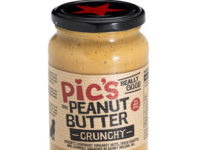 The 4 steps to demystifying shopper insights
The 4 steps to demystifying shopper insights
Various ‘how to’ guides have been published explaining how to fully implement and integrate shopper marketing, but as you work through the shopper marketing roadmap and it becomes core to your business, attention often shifts to shopper insights – and this can be the most confusing topic to tackle.
The logical place to start is with the resource most of you already have access to – scan data. But scan data can only take you so far with strategy development and retailer engagement. More often than not, and especially in today’s more complex marketplace, the need for primary research arises. So where and how do you start?
Shopper research can, and does, utilise a plethora of research methodologies including online, face to face, observations, intercepts, exit interviews, ethnography, accompanied shops, focus groups, online bulletin boards, filming, eye tracking, biometrics monitoring, virtual store, central location, and choice modelling. Your list of business issues and research objectives that utilise these methods is equally daunting.
The temptation is to jump straight to the shelf and understand shoppers at the point of purchase with tactical activations in mind, but usually the best starting point is to lay a foundation of shopper and market understanding to input into strategic planning before heading into the store.

There are four key steps to work through when starting a shopper insights journey:
Step 1: Devise a growth strategy
The starting point is getting to know how people buy products – or the six W’s:
- Who – Shopper profiling
- When – Shopping mission, day and time of purchase
- What – How are brand, sub-brand, pack format and pack size decisions made
- Where – What channels and retailers are chosen for which purchases
- Why – Intended usage occasion, immediacy of consumption and usage needs
- How –Planning levels, approach to category.
These provide a valuable mine of data, which can be utilised for years to come, but the golden insight comes when you can identify new activation opportunities and growth areas by examining the intersection of the mission (that drives channel and store choice) with the intended consumption occasion (that drives product choice).
In terms of methodology, bigger is better, so a quantitative online usually fits the bill nicely.
Step 2: Activation
Once you have this baseline of understanding, you are well equipped to start thinking about examining how shoppers behave instore to guide your tactical activation strategies.

This is where the multitude of research possibilities comes into play – do you focus on the shelf, the category, the planogram, pricing, packaging, POSM, or store layout?
The answer will lie in understanding your particular business issues to identify the best opportunities, but usually a good starting point instore is with the shelf.
There are two key aspects of the shelf that shopper insights can help to optimise:
- Shelf layout – What shelf hierarchy will be most effective for shoppers, and what is the optimal product segmentation?
- Communications – How can packaging and POSM best influence shoppers?
We know from decades of research that shoppers post-rationalise and forget the intricacies of what they do and why, so the capture of their behaviours and attitudes at the point of purchase is essential.
This type of research is best conducted instore utilising a combination of observations (human or camera) and interviewing (intercept is best to capture the shopper as close to the shelf interaction as possible).
Step 3: Test and optimise
Once you have your insights and have decided on a course of action there is often a big leap of faith and hefty investment involved in implementation.
This is where pre-testing allows you to validate, refine and optimise solutions before taking them out to the market and your customers.
 This can be undertaken through test store implementation if you have the buy in of your customer, but more often it is undertaken via out of store research.
This can be undertaken through test store implementation if you have the buy in of your customer, but more often it is undertaken via out of store research.
You can create mock shelves or stores and recruit shoppers to shop these fixtures, but technological advances have given rise to the virtual store, which is now the optimal approach to this kind of testing.
Once set up, your virtual store and shelf can be used to test multiple scenarios and can even be conducted online with respondents ‘shopping’ from their own home.
Concerns often arise about the validity of virtual store research and how well it reflects actual shopper behaviour. Validation work has been conducted by many agencies, including TNS revealing that virtual store shopping does well reflect actual store shopping.
Although I would not necessarily recommend using virtual research to understand shopper behaviour, it is a perfect vehicle to test scenarios such as find time, navigation, basket size, and cross purchase to identify the solution that has be biggest positive impact amongst shoppers.
Step 4: Repeat
There will always be aspects of the shopper journey that you do not fully understand, but working through the above three stages will help to guide you towards a smart shopper marketing strategy with better use of powerful shopper insights to drive your decisions.
Once you have these aspects nailed, look to the areas that will have the biggest positive impact for your customers, the category and of course ultimately, your business.
Understanding shopper insights is truly one of the most essential components of shopper marketing, but does not need to be daunting if you know where to focus. Getting inside the heads of your shoppers is a powerful advantage in driving your path to profitable growth.
Peter Firth is a Director at TNS, the world’s largest shopper insights agency. Peter and the TNS Retail and Shopper practice advises on growth strategies around new market entry, innovation, brand switching and stakeholder management.











